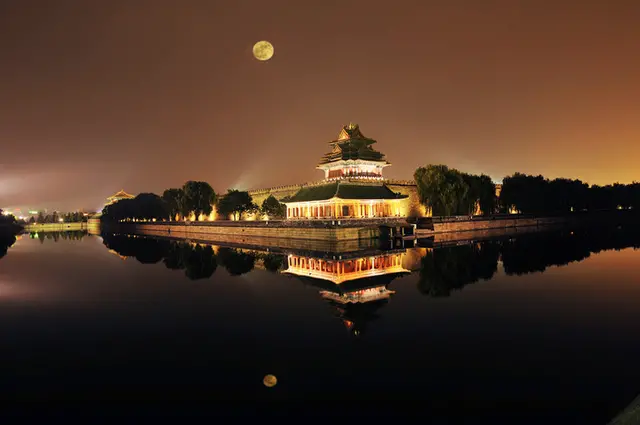For nearly 500 years, the Forbidden City served as the emperors home. In 1925, the new Chinese government turned the Forbidden City into a museum.
In the past few days, curator of the Palace Museum Shan Jixiang has been well known on the Chinese social network. He claimed himself as a gatekeeper of the Palace Museum, and he said that his mission is not only to care for cultural relics, but also to expand the cultural influence of the Palace Museum.
Shan said, " People used to emphasize numbers, such as the number of collections and the number of visitors every day. However, these numbers should not be the standards to measure a museum. We expect that the Palace Museum can be a part of people’s daily life."
According to Shan, the Palace Museum has changed in many aspects since 2012. For example, online ticketing has been popularized, the cultural and historical relics in warehouse have been repaired and on display, emoticon and App of the Palace Museum have been released.
In 2016, the Palace Museum announced its partnership with the Next Idea. In the first year, the Palace Museum opened a series of intellectual property to the outside world, and collected emoticon designs and game ideas from youths. A series of the Palace Museum’s emoticons then made their debuts. Shan said, " Emoticons make the image of the Palace Museum younger, and we hope the youths know more about the Forbidden City."
Emoticon of Emperor Kangxi
Earphones of Mandarin beads
The film*--Masters in the Forbidden City*
Moreover, the documentary, Masters in the Forbidden City earned a high score of 9.4 points on Douban Movie, the Chinese version of IMDd, surpassing the hot documentary, A Bite of China, to become the most influential documentary in 2016.
One scene that’s popular with internet users is a young female restorer riding a bicycle through the quiet Forbidden City. The narrator says, " You are riding bicycles in the Palace like the last emperor of the Qing Dynasty."
The restoration of cultural relics is time-consuming, and sometimes boring. Yet the restorer’s patience is especially precious in a society which everything is changing so fast.
There was no chair in front of the Palace Museum in the past, visitors had to sit on the ground in front of the square, or lean on the parapet.
Shan said, " We aim at providing convenience for every visitor. Thus, Shan set many seats around every tree in the Palace Museum."
Shan believed that it is urgent to recall the esteem of The Palace Museum. So, the Forbidden City has made new requests since 2013, such as No smoking and No Passing.
Shan explained," The Buckingham Palace in the United Kingdom, Versailles in France and the Royal Palace in Japan, do not allow vehicles to pass through. The crux of the matter is the cultural esteem."
In fact, the Forbidden City is too big to travel. It is not convenient for the staff. So, Shan regulated that people can only use bicycles or battery cars to travel, even foreign leaders are no exception.
In 2013, French President Hollande came to visit the Palace Museum on foot. He got off at the Meridian Gate at Shan’s insistence.
Shan said that all changes above aim at helping people be interested in historical and cultural relics.
Public named Shan as the head of the Palace Museum. But he called himself gatekeeper, the one who keeps 9,371 ancient rooms and 1,807,558 collections of Palace Museum well.
APD Writer Yang Siyao
(ASIA PACIFIC DAILY)
 简体中文
简体中文



